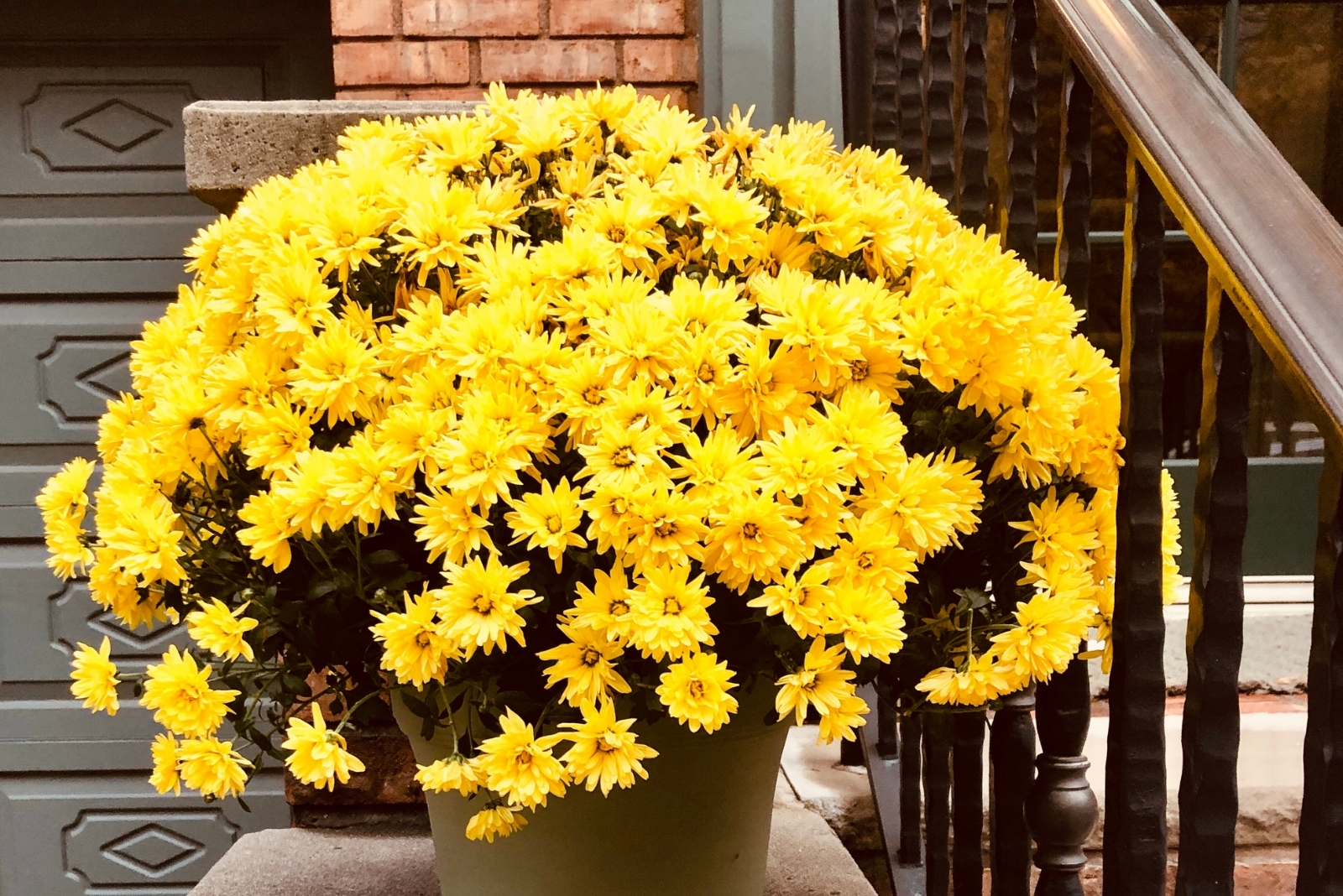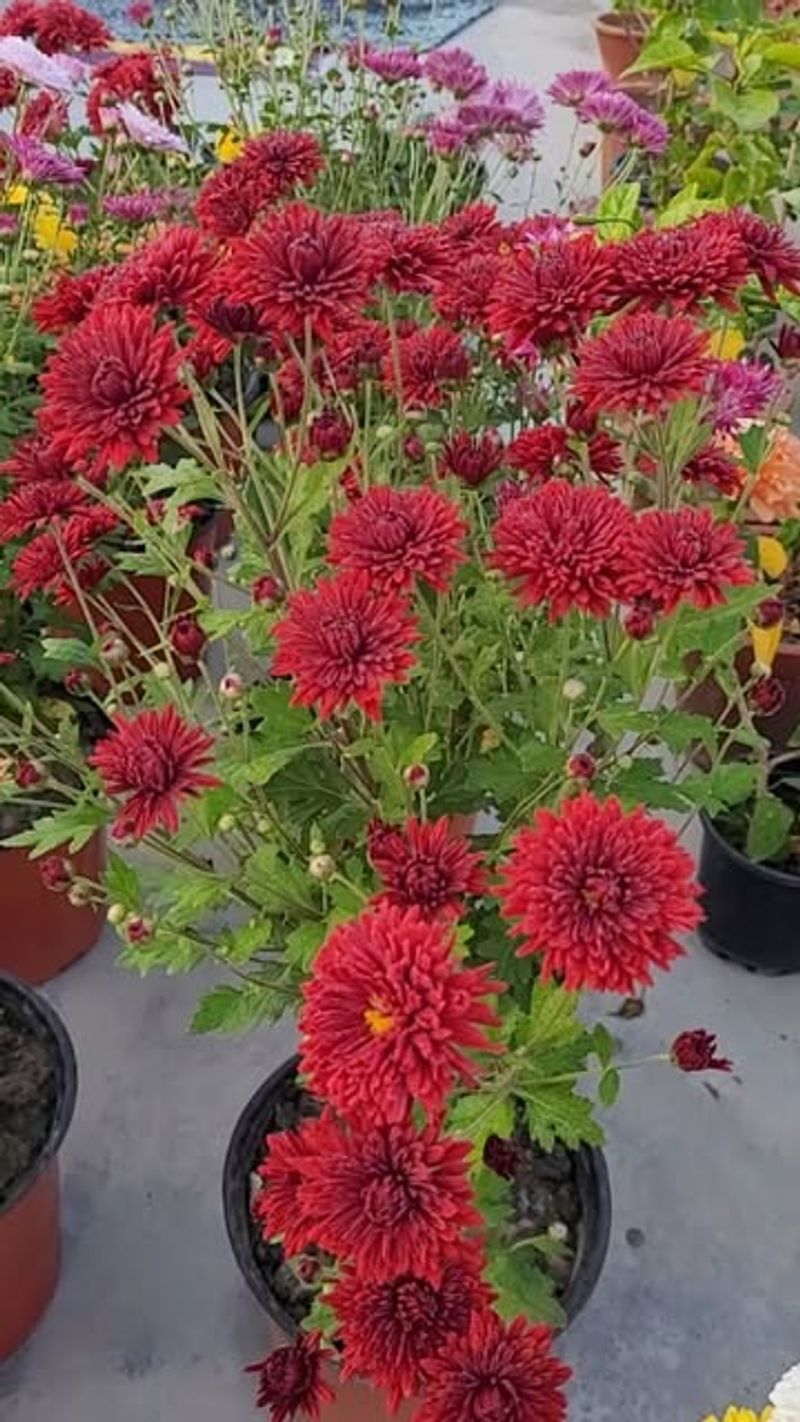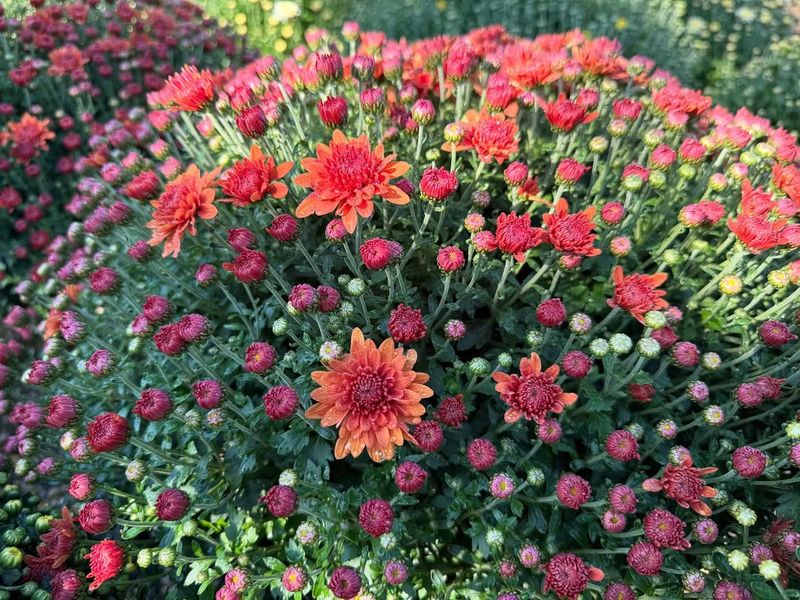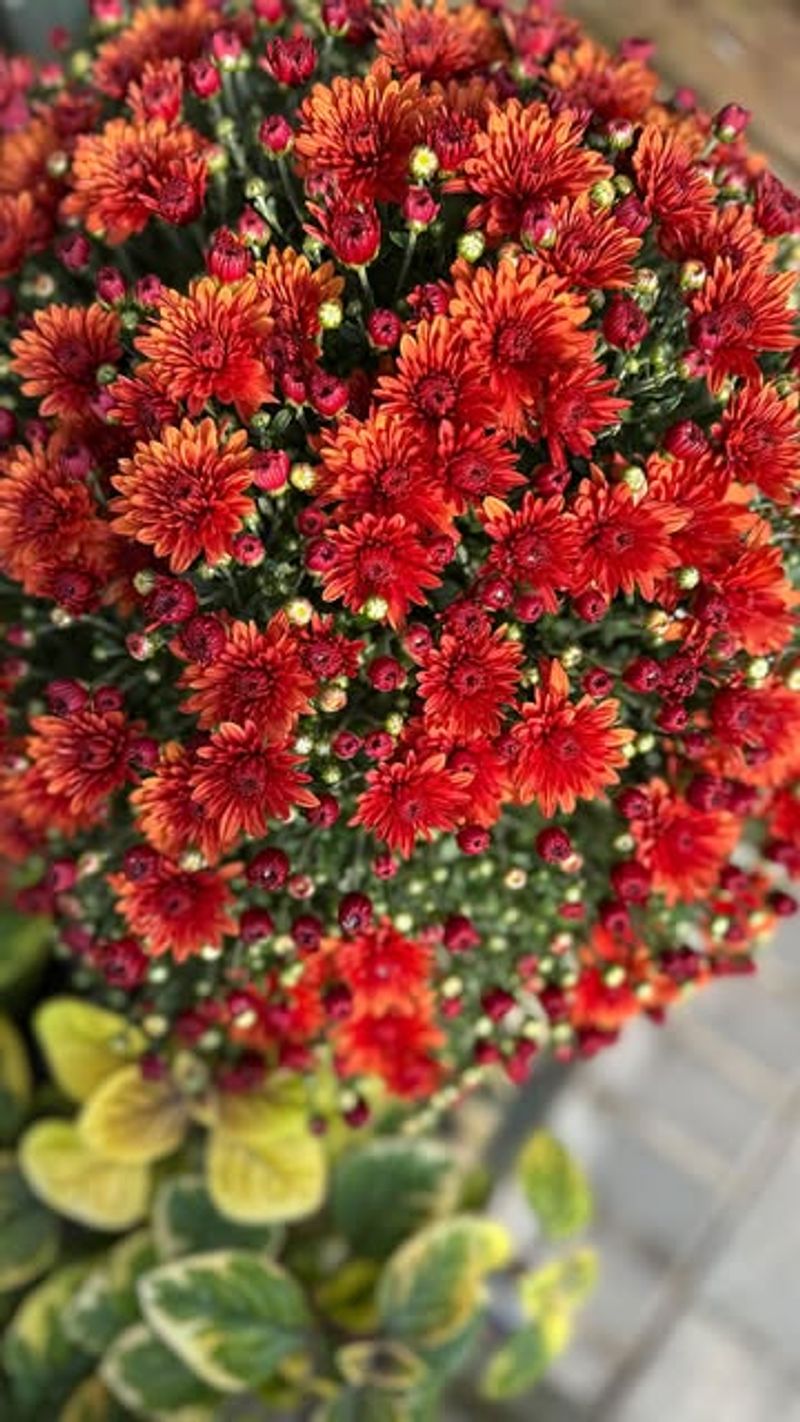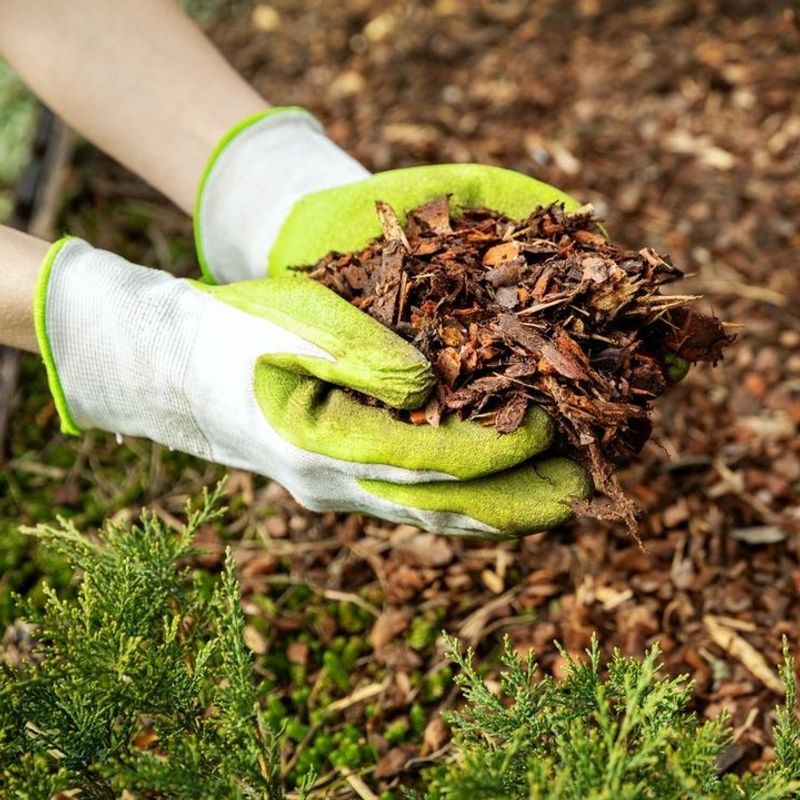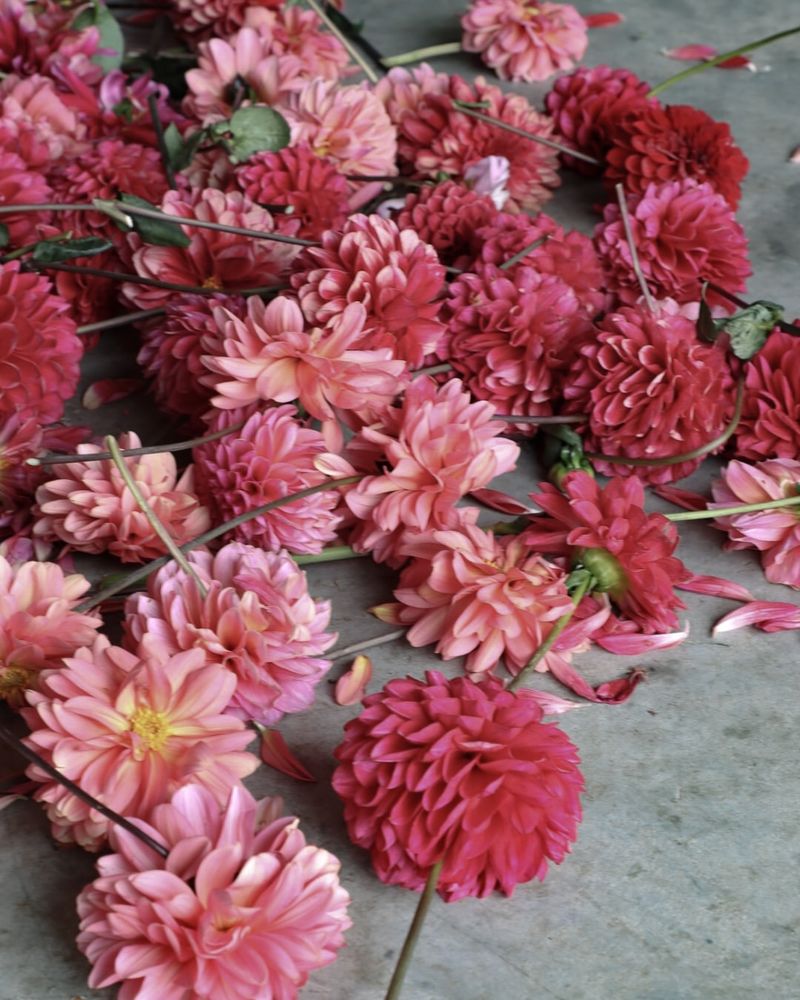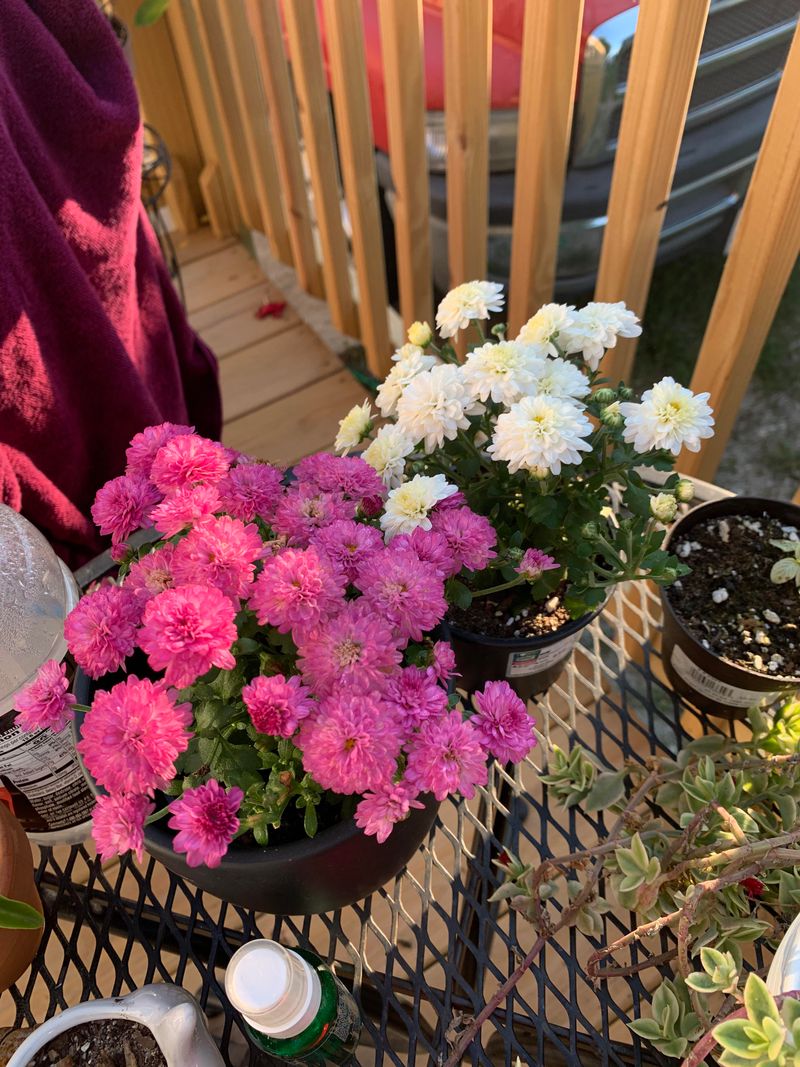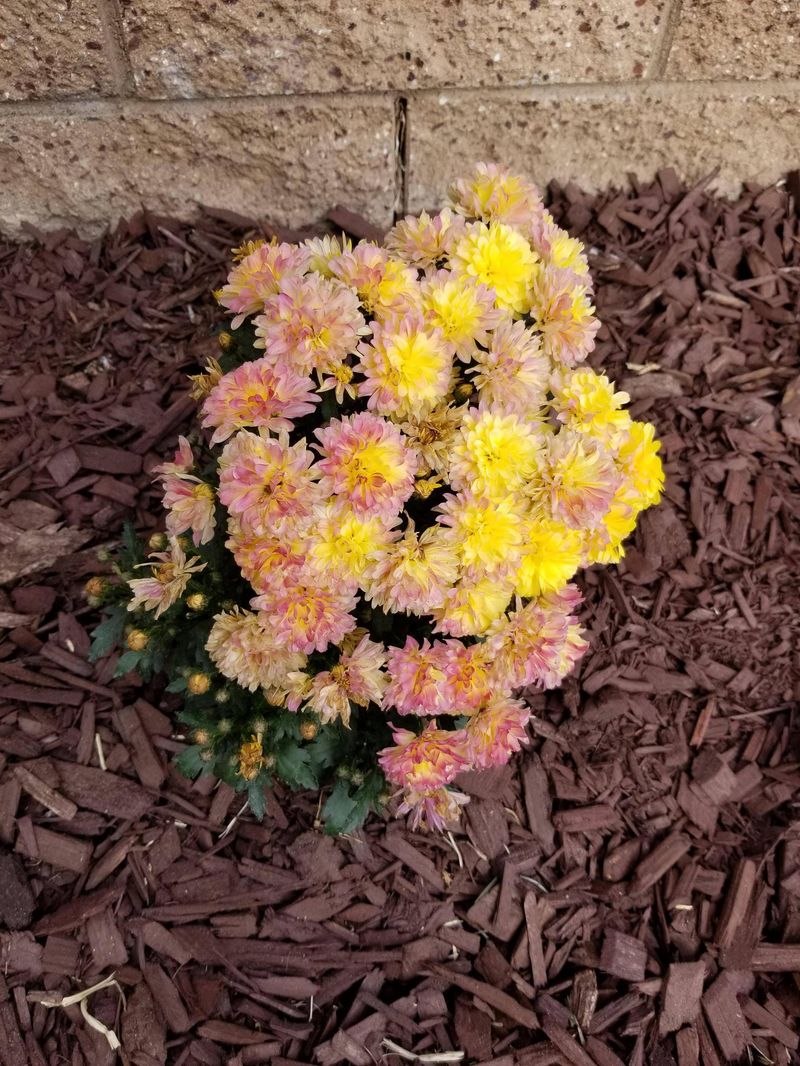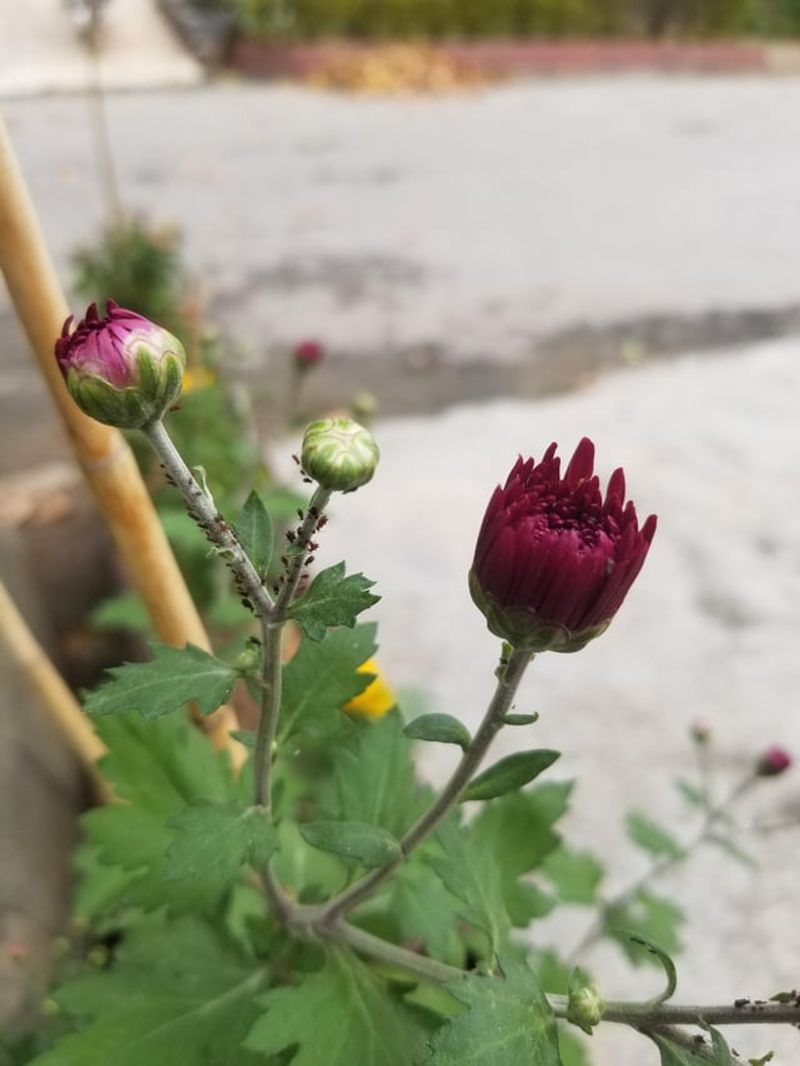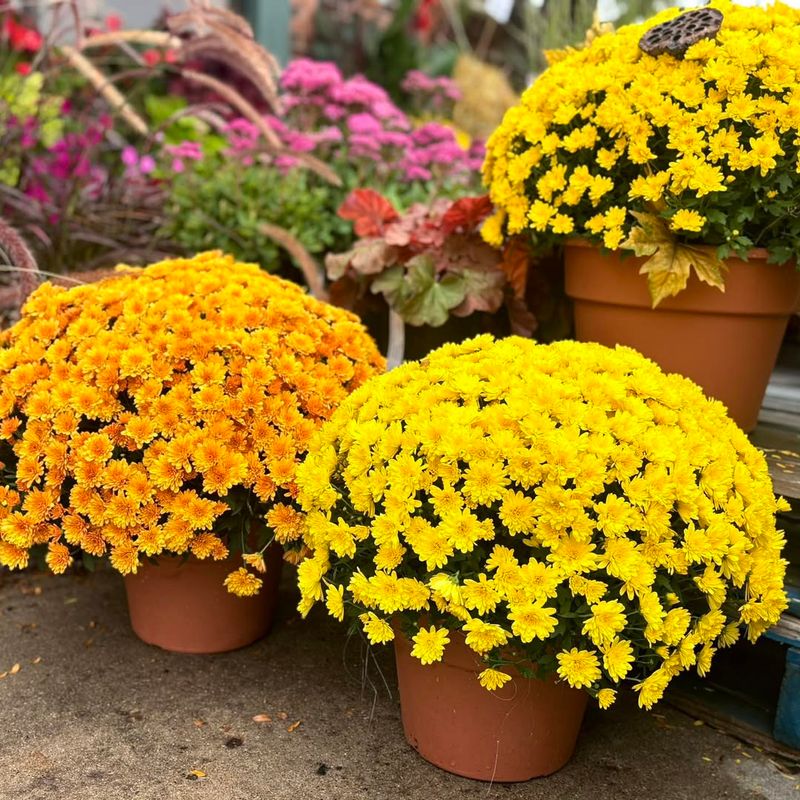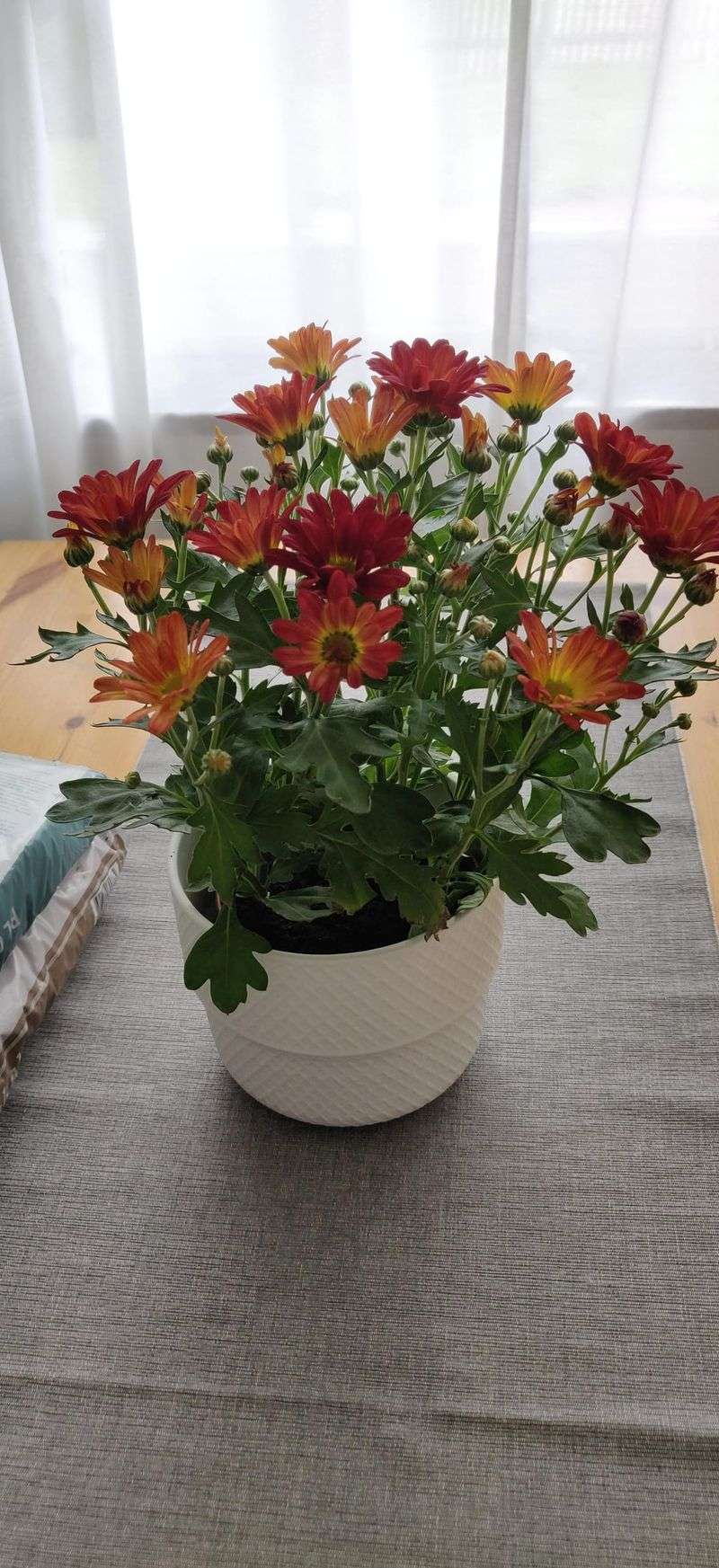Wisconsin’s crisp autumn air can be tough on mums, but with the right care, they can stay fresh and vibrant. These tips help you enjoy colorful blooms well into fall without that dreaded crispy leaf.
It’s all about timing, attention, and a little know-how. Wisconsin gardeners will find these 10 tips perfect for keeping mums at their best this season.
1. Choose Wisely When Purchasing
Look for mums with more buds than open flowers when shopping at Wisconsin garden centers. Plants with tight buds will bloom longer throughout the fall season, giving you weeks of color instead of days.
Many Wisconsin gardeners rush to grab the showiest plants, but patience pays off. Select healthy plants with strong stems and no signs of wilting or yellowing leaves.
2. Water Properly, Not Excessively
Morning watering works best for mums in Wisconsin’s climate. The soil should feel moist but never soggy – check by sticking your finger about an inch into the soil before adding more water.
Wisconsin’s unpredictable fall weather means staying vigilant. During dry spells, water deeply at the base, avoiding the leaves and flowers completely to prevent fungal issues that lead to crispy foliage.
3. Provide Perfect Sunlight Exposure
Full morning sun with afternoon shade creates the ideal balance for mums in Wisconsin’s fall climate. Too much harsh afternoon sun can quickly dry out your plants, especially during unexpected warm spells that sometimes hit the Badger State.
Consider positioning your mums where buildings or trees provide natural afternoon protection. Wisconsin’s northern latitude means the sun’s angle changes quickly in fall, so monitor how sunlight patterns shift across your garden.
4. Apply Mulch Around Base
Spread a 2-inch layer of shredded bark or straw around your mums to retain moisture. Wisconsin’s fluctuating temperatures can stress plants, but proper mulching creates a buffer against these changes.
Keep the mulch from touching the stems directly to prevent rot issues. Many Wisconsin gardeners have saved their mums through early frost events simply by maintaining this protective layer throughout the fall season.
5. Deadhead Faded Blooms Regularly
Snip away spent flowers as soon as they fade to redirect energy to fresh buds. Use clean, sharp scissors and cut just above a leaf node or where the stem branches to encourage fuller growth.
Wisconsin gardeners who deadhead consistently often enjoy mums that bloom well into November. This simple maintenance task takes just minutes each week but dramatically extends the flowering period throughout our northern fall season.
6. Protect From Harsh Winds
Wisconsin’s notorious fall winds can damage mums by drying out foliage and breaking stems. Place potted plants near structures or larger shrubs that provide a natural windbreak without blocking essential sunlight.
For garden-planted mums, consider temporary burlap screens on the windward side. Many Wisconsin gardening veterans swear by this old-school technique for keeping their autumn displays looking fresh despite the gusty weather that sweeps across the state.
7. Fertilize Sparingly, Not Heavily
Feed mums with half-strength liquid fertilizer when you first bring them home. Wisconsin’s shorter fall days trigger blooming, not feeding, so excessive fertilizer actually hurts rather than helps your plants this time of year.
Avoid high-nitrogen products that promote leafy growth at the expense of flowers. Many Wisconsin garden centers sell special “bloom booster” formulations with higher phosphorus that support existing flower buds without pushing unnecessary foliage.
8. Monitor For Pest Problems
Inspect the undersides of leaves weekly for spider mites and aphids. These tiny pests love Wisconsin’s dry fall conditions and can quickly cause leaves to yellow and crisp if left unchecked.
A strong spray of water often dislodges minor infestations without chemicals. Wisconsin gardeners dealing with persistent pests can try insecticidal soap, applying it during cool mornings when beneficial insects are less active in your garden.
9. Cover During Frost Warnings
Keep old sheets or frost cloth ready for unexpected cold snaps. Wisconsin weather reports often give just enough warning to protect your mums before temperatures plummet below freezing.
Drape covers loosely over plants before sunset and remove them in the morning. Many Wisconsin gardeners have extended their mum season by weeks with this simple practice, especially in the northern parts of the state where early frosts are common.
10. Repot Carefully If Needed
Move store-bought mums to slightly larger containers if they appear root-bound. Wisconsin’s windy conditions can topple top-heavy plants, so choose wide, stable pots and fresh potting soil with good drainage.
Avoid disrupting the root ball significantly during fall transplanting. Many Wisconsin gardeners successfully transition their mums from plastic nursery pots to decorative containers without stress by maintaining the same soil level and watering thoroughly after the switch.

